Making Art in Small Spaces
I am very fortunate to have a studio (a spare bedroom in our home) and unless I’m showing art at a festival, or framing, I spend most days in that room. I’ve done a lot of exploring to find the best art supply storage options for a watercolor and printmaking studio. Let’s compare notes!
When you Don’t Have an Art Studio
I write a lot at our old kitchen table, or work on paintings and printmaking projects – while listening to an audiobook (I’ve just finished this one) – starting in the still-dark hours of early morning.
When my husband comes home in the evenings, if I want to continue drawing or painting, I keep a tote bag of supplies handy that I can move around the house.
The tote bag has a travel palette of watercolors, a few collapsable watercolor brushes, an artist’s pencil case, a 6 inch ruler, masking tape, the shallow frosting cap from a cylinder of Trader Joe’s pop-n-bake cinnamon rolls (I use it as a rinse cup), a few sheets of gator board as support, and a block of watercolor paper. #artistatlarge
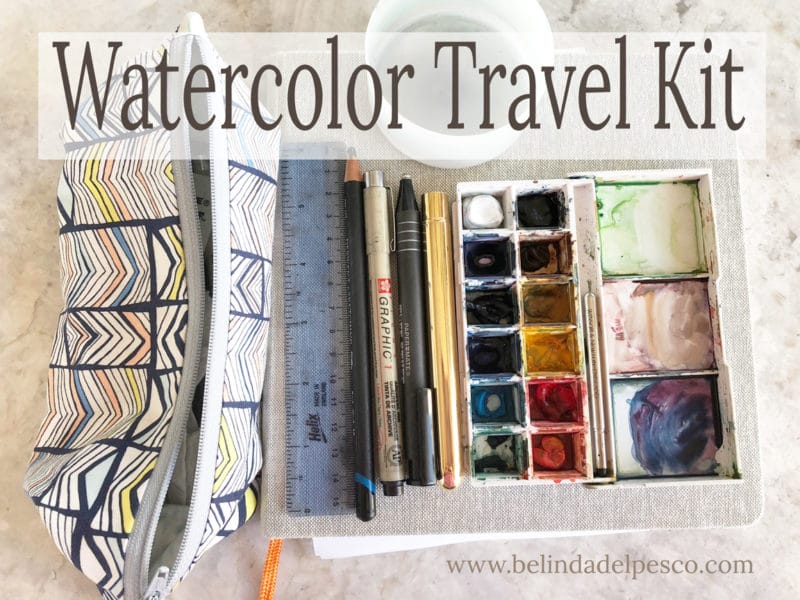
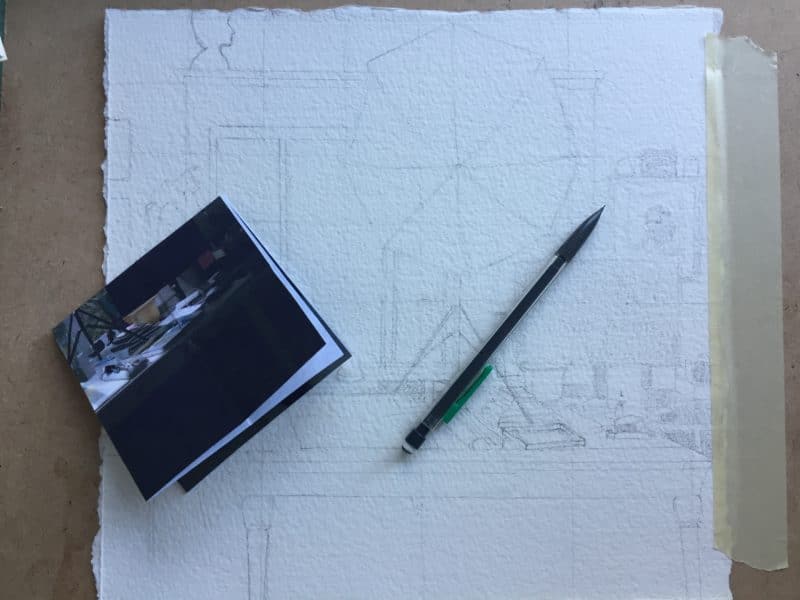
Art Supply Storage for More Frequent Creative Time
I keep a micro-bead lap desk under the couch, so I can pull that out, lay down a support board, tape a sheet of paper down, or pull out a watercolor block, and start drawing at a moment’s notice. Got 30 minutes? How about some drawing?
Do you grid drawings? It makes the drawing for a watercolor process much easier. I can stop for conversation, or snap a photo of my shenanigans on the couch without losing my place. I’m drawing abstract shapes in the reference photo one cube at a time. It’s so helpful, isn’t it!?
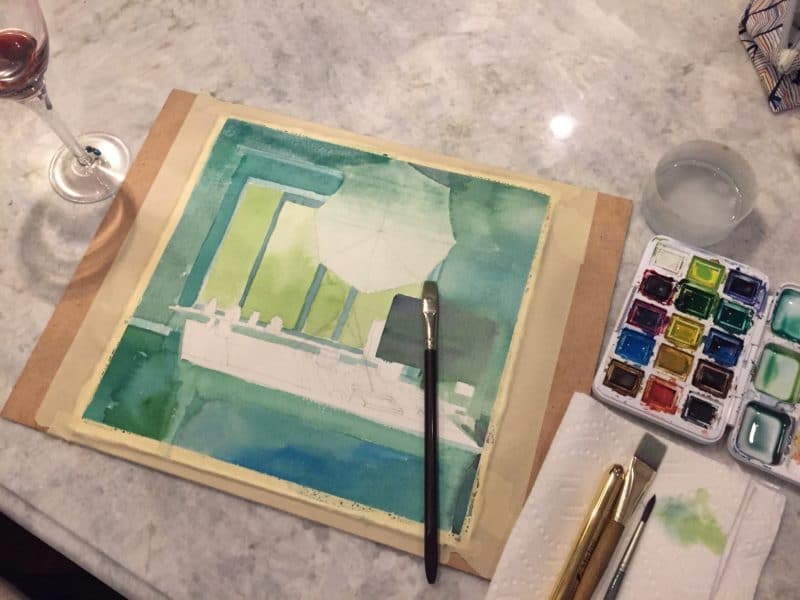
Making Art Supplies Nimble and Portable for More Painting Time
You can gather art supplies for a nimble painting set up too. It works beautifully for after dinner small studies, rough still life sketches, or even abstract color swatch tests.
Pre-tear your watercolor paper to 8×10 or 5×7 sheets, and you can even pre-mount it in groups of four to gator board with tape so you’re ready to sketch at a moment’s notice.
A little organization and pre-motor planning goes a long way in getting fast access to move those art supplies.
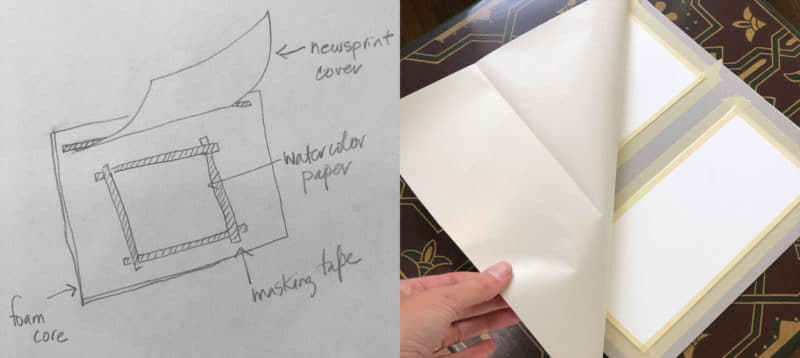
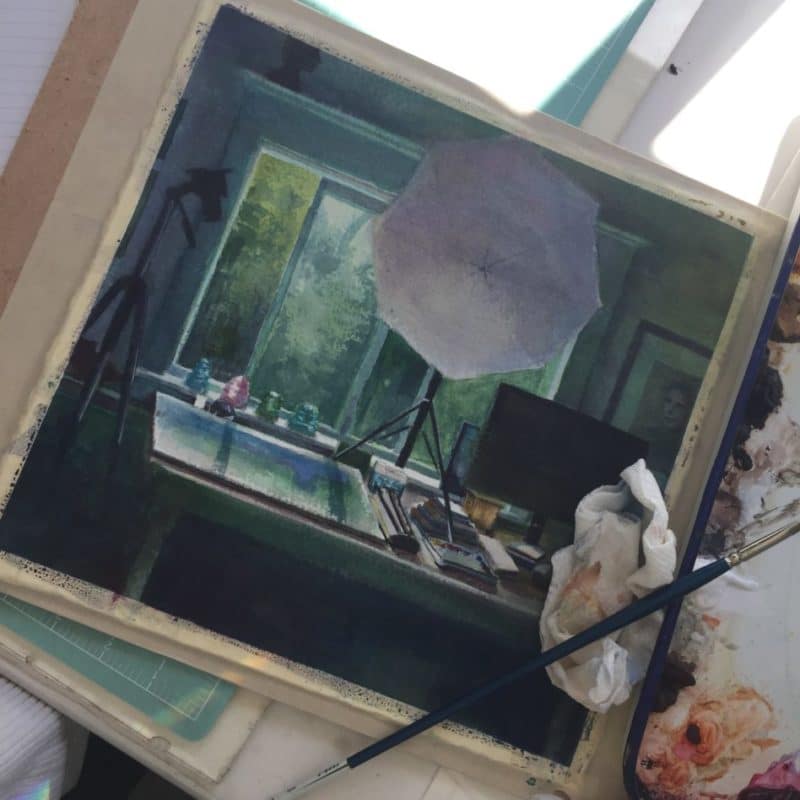
Artist Studio Organization and Storage
And speaking of organization and art supplies, how do you store finished art? Over the years, I’ve tried a number of storage options, including a large set of HON flat files gifted to me by a former employer (see below).
They were solid enough to sit on, and when raised on a support, I used them as a work surface to mat and frame art, or paint from a wooden table top easel.
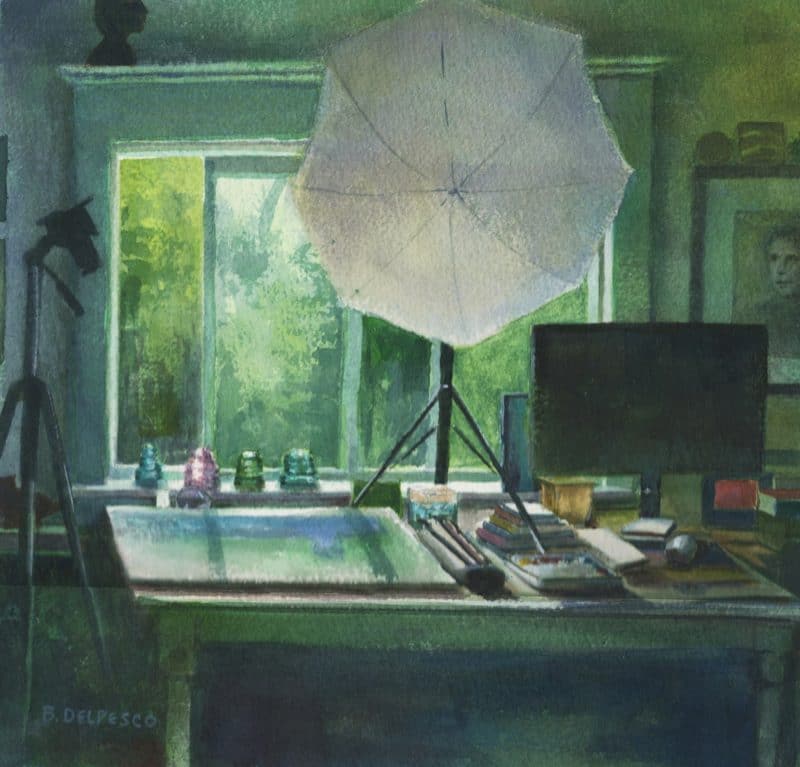
Artist Filing Systems
I donated my flat files to the art department of a local high school after a move to a smaller studio, and I miss them.
Now, I use a filing system of baskets tucked into a baker’s rack on casters in a coat closet. Each basket has an alphabetical group of 12 x 15 envelopes – each with original, unframed small art, tucked alongside the reference materials and sketches for each piece.
My larger, unframed work goes into 18×24, vertical cardboard file folders that can be tucked into the back of a closet, or behind a door. I also use an artist’s portfolio case under a bed. Do you know about these (see below)?
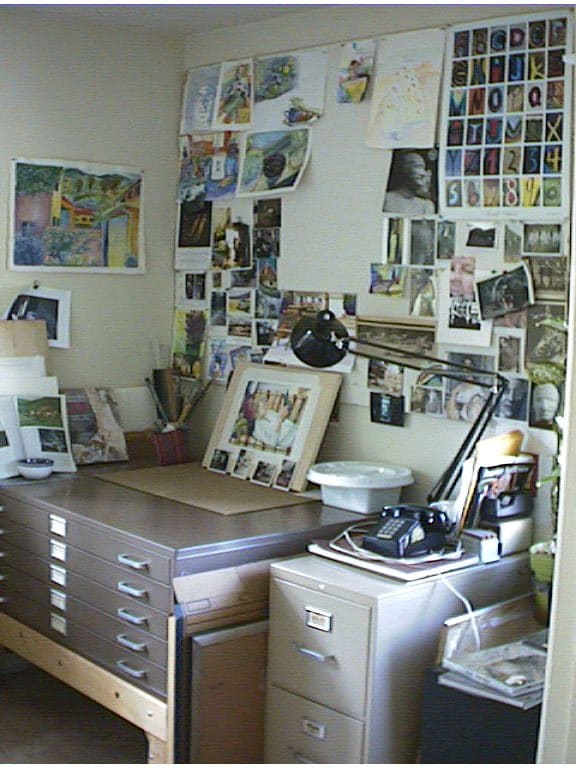
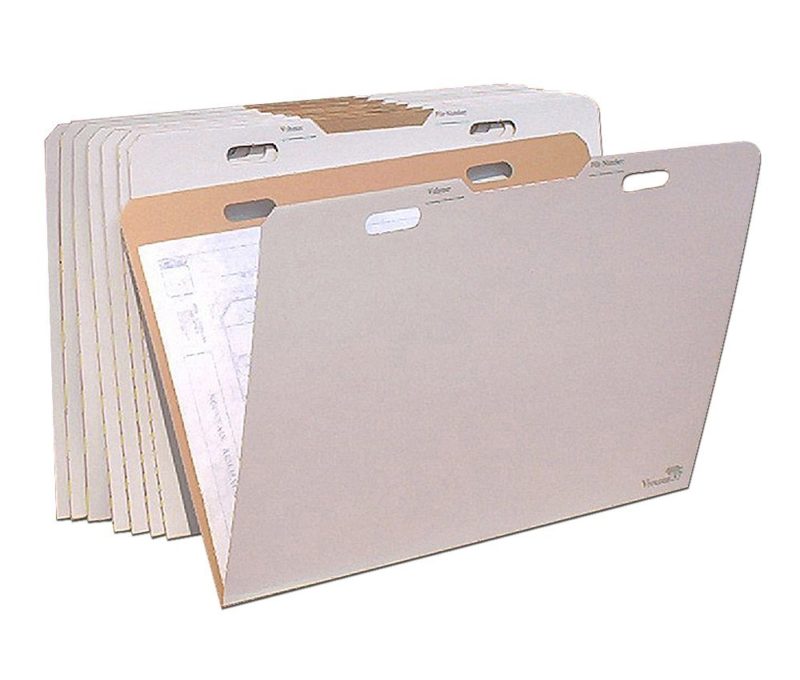
Lightweight, Affordable Art Supply Storage Options
I use these cardboard file folders in the 18×24 format to store unframed art, as well as full sheets of paper. I’ve kept my printmaking paper in one of them for years, with post-it notes arranged like tabs to separate different manufacturer’s and weights of paper.
The folders have done a great job of protecting my paper and art from dog ears and dents. I use these clips to hold them closed, and tuck the folders in the back of a closet or under the bed.
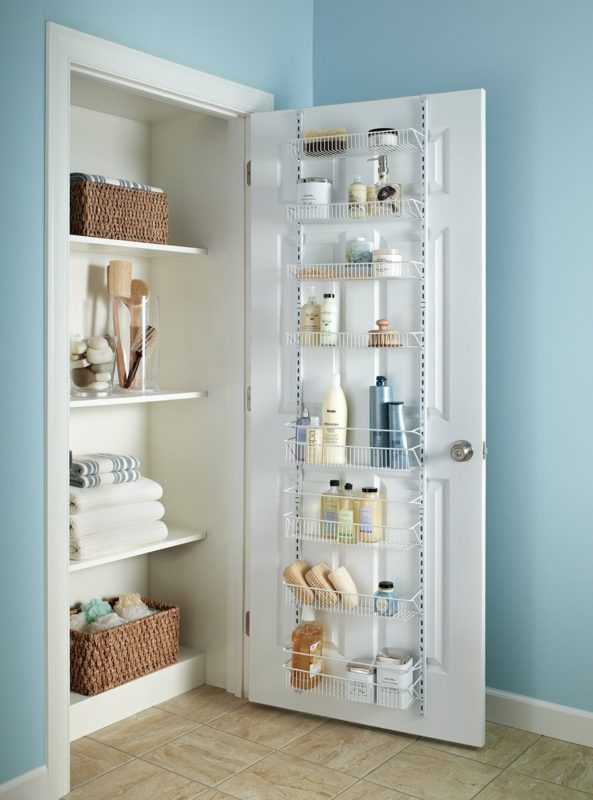
Re-Purposed Storage Tools for the Artist’s Studio
You can squeeze all storage possibilities from the closet in your studio with caddies like this one by closetmaid in the photo above.
In my previous studio, a closetmaid shelf unit with a bag of wooden clothespins served as a drying rack for printmaking (see below).
I don’t currently have a drying rack for prints, but I’m marinating on a solution that I’ll share when I get it figured out and assembled.
I also use two hanging cloth shoe-boxes (like this one) to hold carving tools, boxes of printer ink, video camera equipment – like the bulbs and the umbrellas for my lights that are featured in the watercolor at the top of this post.
The front-load opening of the shoe hangers are perfect for boxes of business cards, staplers, zip-locked tubes of paint, framing hardware, shipping supplies and the like.
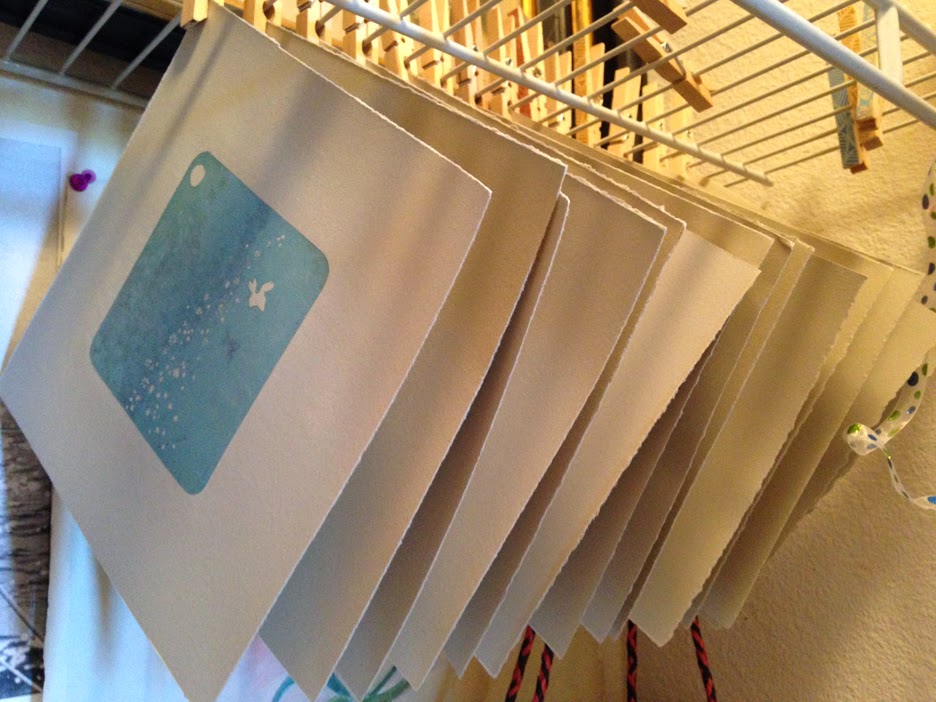
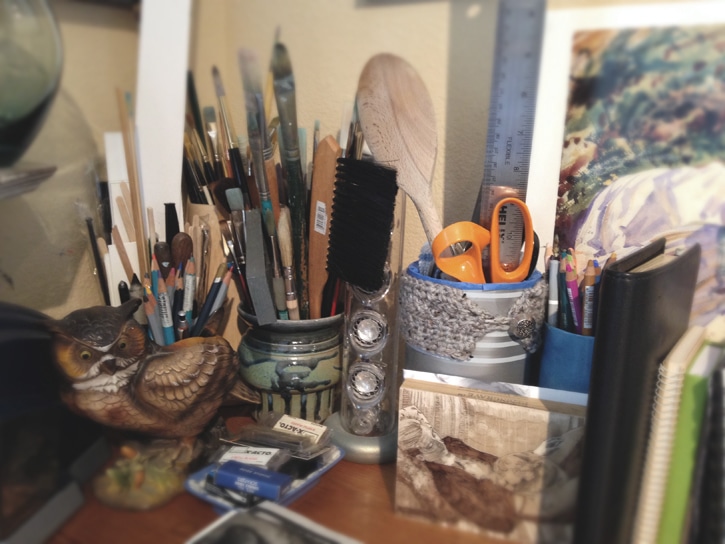
How to De-Clutter an Artist Studio?
What do you use to store small and large scale flat art, paper and various artist supplies? Being an artist is messy, and the supplies can take over a room (or a whole house, depending on your media).
Putting things away and clearing your main work surface for more creative time can make a big difference in productivity.
How do you get your space organized? Leave your tips and tricks in the comments, and let’s get ourselves arranged and ready for a season of art making.
Thanks for stopping by and I’ll see you in the next post –
P.S. You can subscribe to get each new post via email right here (free).
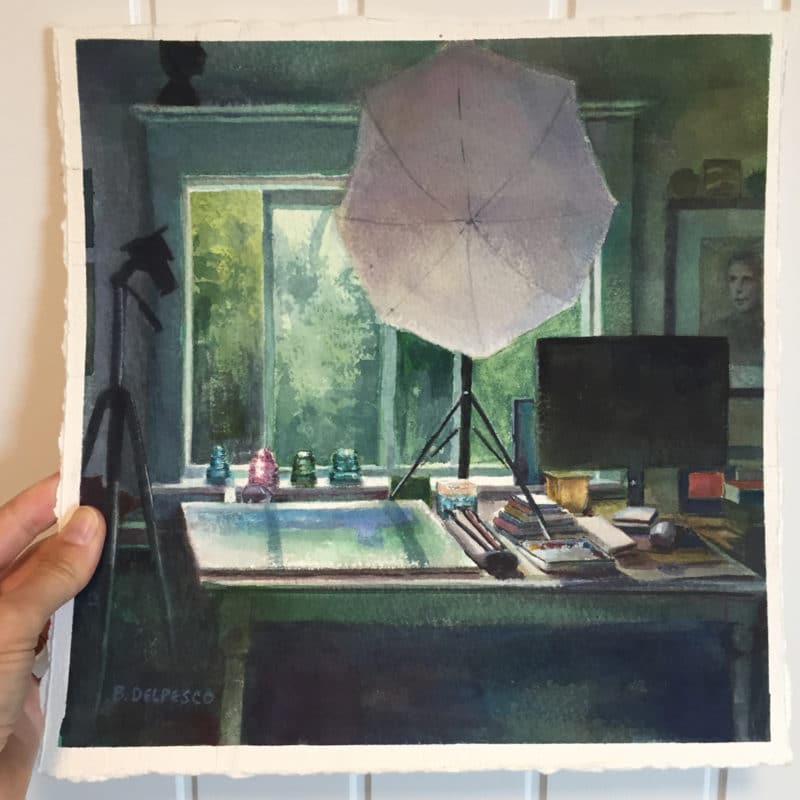
Art Quote
When you enchant people, your goal is not to make money from them or to get them to do what you want, but to fill them with great delight.
– Guy Kawasaki
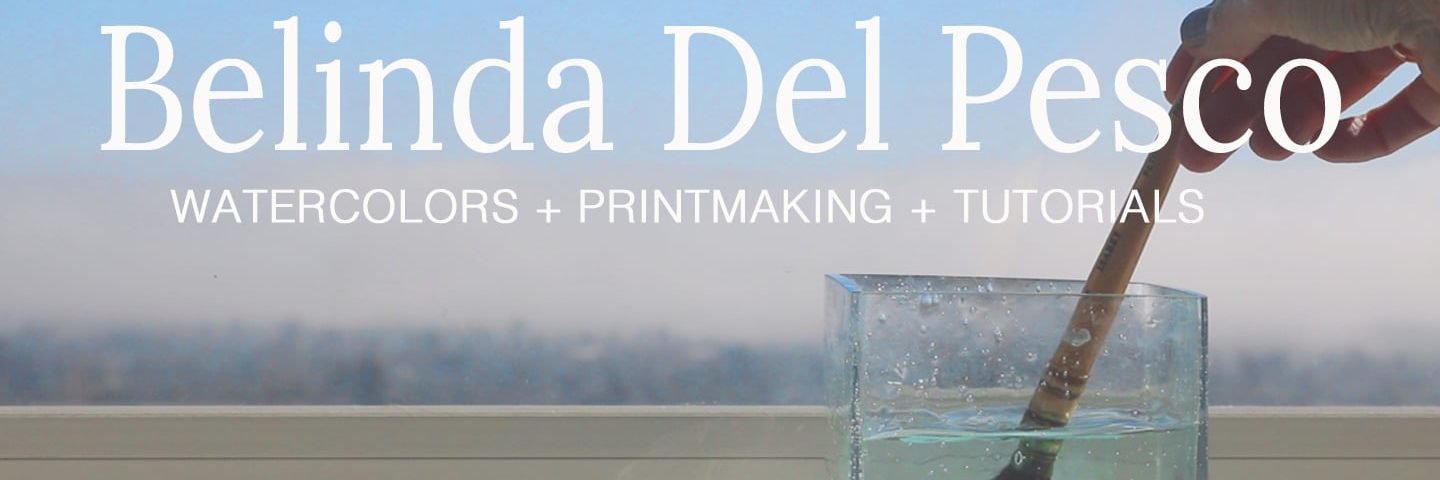
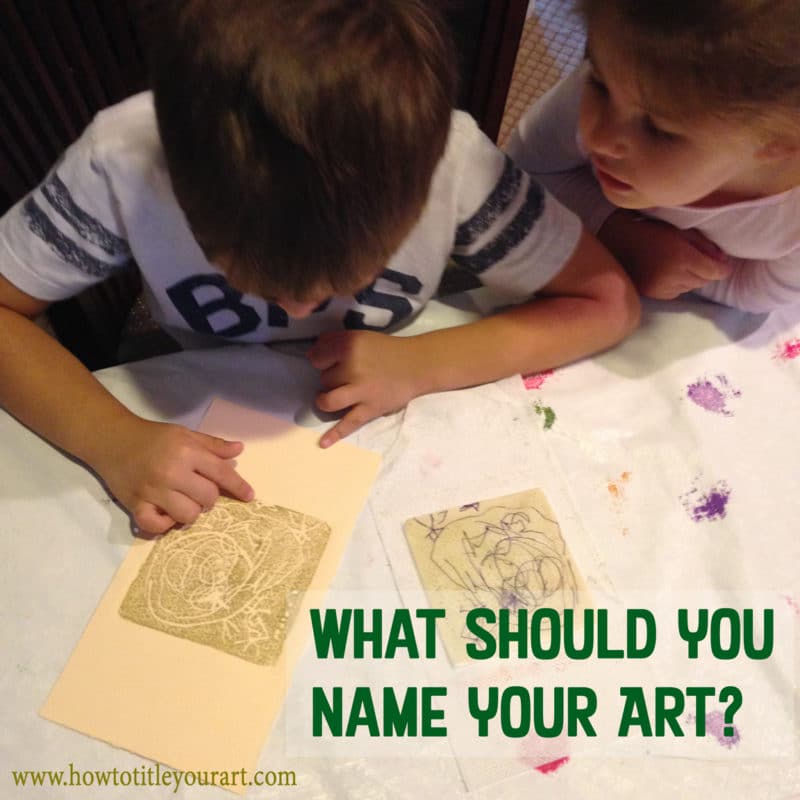
I am a writer with a painting/crafts corner in my home office. Thank you for the helpful organizational tips, Belinda. Oh–and your “Artist’s Studio” watercolor is GORGEOUS!!!
Hello and welcome, Eleyne-Mari! I’m so glad the post details were helpful for you! And I love that you are a writer with an art corner, and I am an artist with a writing corner! It’s nice to “meet” you. Thanks for the compliments on the watercolor of my studio. XO
This was amazingly helpful! Thanks!
Hi Kirsten – Thanks for the feedback! I’m glad it was helpful. 🙂
Thanks for the shoutout! How well I remember those cabinets.
I would never have kept that beast without the raised stand, so thank you again for such sturdy tall-ifying assistance!
I love your storage ideas, especially the large files. That’s the first thing on my list to get my art closet organized! Thanks for so many good ideas to help on the road to creativity!
Great heaps of luck in your pursuit of art-readiness through a little clean sweep!
That flat file photo is so old you have a plug in push button land line corded handset phone by it. 🙂
Heh, heh, heh… Precisely, Madame Inspector! I used to love that phone, because it was out of date even then (1994). Good job on your powers of observation! 🙂
I am consistently moved by the Belinda blog — your generosity and good spirit! And by your well-developed eye for the Beautiful and True. Thanks for posting.
And my condolence on your recent loss…
Thanks for your kind words, Laurel. 🙂
Great idea for vertical storage of artwork and paper. It’s always hard to figure out where to store delicate artwork, like pastels. I use tracing paper pads of varying sizes and store artwork between the sheets. The sides are closed with binder clips so everything stays in place. It can then be stored vertically or flat. I’m fortunate to have a dedicated art/sewing room and places to store all my supplies, but we all seem to start with a spare bedroom. I always enjoy your blog. Thanks for keeping us inspired.
Hi Mickey, Storing pastels between the still attached sheets in pads of tracing paper with clips is BRILLIANT! I don’t work in pastel too often, but once a piece is finished, it’ll go in a tracing paper pad from now on. Thank YOU!
Great tips – thanks for sharing!
Thanks for visiting, Kathleen!
Thank you for the suggested lap top pillow. I have a room I escape to also and this will work wonderfully.
Hi Debbie, I *love* using the lap desk for drawing. And your Escape Room sounds delightful. I hope it helps you create more frequently.